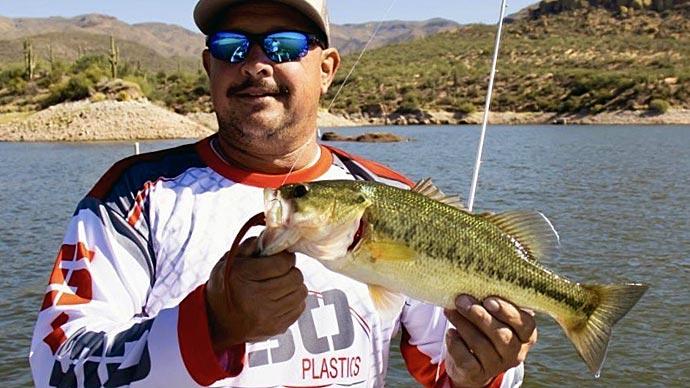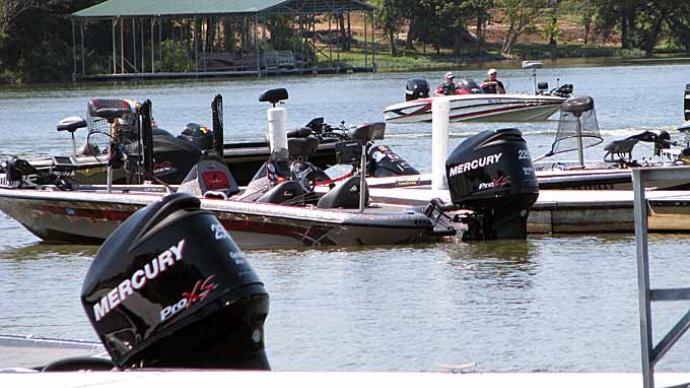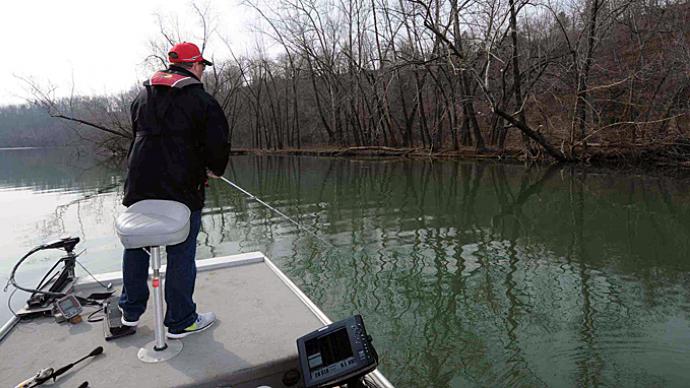
With the days getting longer and the snow starting to melt, it’s no secret that it’s almost time for bass tournament season to get underway. Most trails start sometime in March, run through mid-summer, take a little break to beat the heat, and finish off sometime around October. My tournament season in East Tennessee officially starts the first weekend in March. However, preparation for the season starts about a month before.
Four weeks before the first tournament, I start watching the weather to try and determine what kind of conditions I would be faced with. Right now, it is mid-February, and we are experiencing a pretty stout cold front, along with a few inches of snow. But what does today’s weather have to do with the conditions three weeks from now? I’m glad you asked.
For the next few weeks, the fishing will be less than grand. We will be faced with typical post-frontal conditions. However, due to all the rain and snow, our creeks and rivers will be taking on some heavy runoff, which will likely cause the lake to take on the color of chocolate milk. Accompanied by logs, leaves, grass, and twigs, it’s safe to say that Cherokee Lake will not be fishing at its prime for a couple of weeks.
The good news is this front hit at the perfect time because it’ll take a week or so to get past the dreaded post front and at least two weeks for the water to settle and return to a fishable color. So with the weather under control, how do we begin the pre-fishing phase of tournament preparation? I always like to begin using the internet. I spend hours a week looking at aerial views of the lake. I like to use the map feature on at least three different search engines because they have different angles, and all their pictures will have the lake at a different time of year. I even do this for lakes where I have fished my entire life. I like to look at every tournament as a new tournament and a new learning experience. If you fish this season with the last season in the back of your mind, you’ll never be able to move up in the sport.
Another great tool I like to use is the Navionics Web App. It’s free, open to the public, and has the most updated versions of almost every lake in the world. I like to compare the contour lines on the app and the aerial views from Google side by side so I can get a better idea of what areas I may want to check out come practice time.
With all this in mind, there is still no substitution for time on the water. I prefer to start my day off with all my rods in the box. Have you ever heard of the term preconceived notions? In the fishing world, it means an angler already knows where he is going and what he will do when he arrives. Nothing will beat you faster than thinking you figured out where to fish before the boat is in the water.
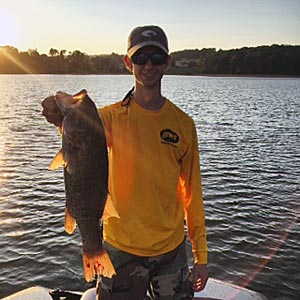
Also, I consider the weather we had the week before, along with water temperature, time of year, amount of sunlight, wind, water color, and anything else that may factor into the equation. Now let’s get to locating some bass. I start by running down the lake without much of a plan. When I eventually find a spot that looks fishy, I’ll slow down and evaluate it. I will turn the sonar on, idle over the area and look for signs of life, including bait fish on the graph, birds on the bank, fish schooling, and other things that lead me to believe there could be bass in the area.
When I find a spot with promise, I start throwing a search bait. I’ll fish that area with this bait until I lose confidence in that spot and move to another. If I get a bite, I typically leave the area and try finding similar spots. Remember, if you’re practicing for a tournament, it’s not a good idea to hook a lot of fish because they’ll likely be skittish of lures for a few days. If you bit into a cheeseburger and got yanked up to the sky, I bet you’d think twice about doing it again for some time. Fish are the same way.
It’s also essential to have multiple spots you can catch fish on because you never know when another competitor will beat you to a spot or another angler hooked a bunch of fish behind you. If you go back the next day and want to check your spots, it's best to throw a finesse bait that matches the forage, but when you get a bite, don’t set the hook. This will help you keep up with your fish without hooking them. If you’re like me and instinctually jerk when you get a bite, then it may be beneficial not to rig your bait with a hook. I suggest rigging a standard soft plastic swimbait and cutting the hook off where it protrudes from the bait's body.
With these tips, you should be able to put together a solid game plan for any tournament. Fish are unpredictable, and just when you think you’ve got them figured out, you don’t. So, go out and fish your strengths, what you have the most confidence in, and what you feel comfortable throwing. You’ll lose more than you win, but the wins are worth the losses.
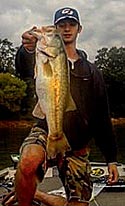
Jed Cutshall is sponsored by Dakota Packaging Solutions, Johnson City Toyota, Double D Tire and Battery, Home Town Realty, Marsh Propane, Greeneville Federal Bank, Volunteer Industrial Services and Associates, and 3B Custom.


